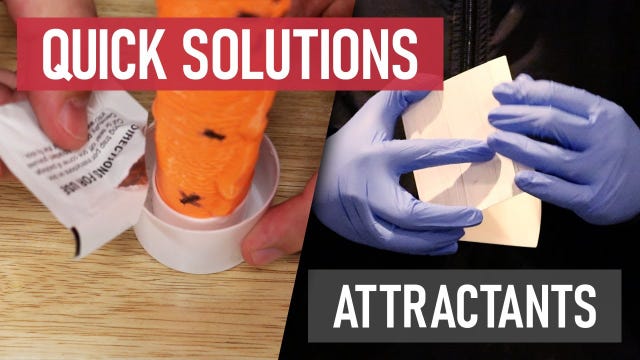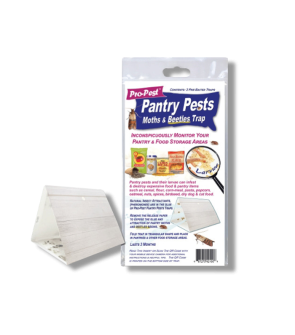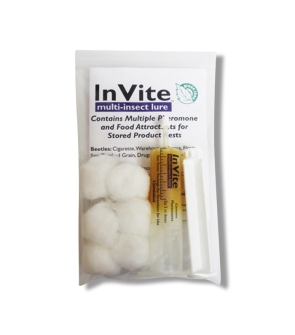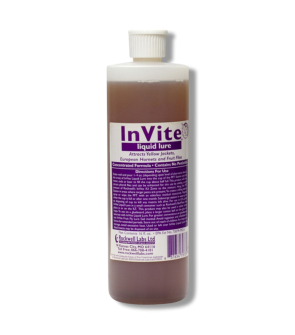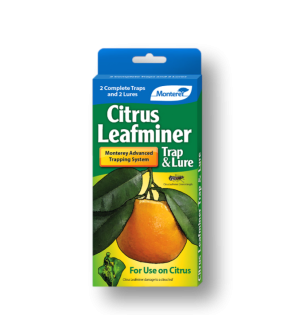Gain access to personalized product screening, the best pricing, rewards, and more!
Attractants
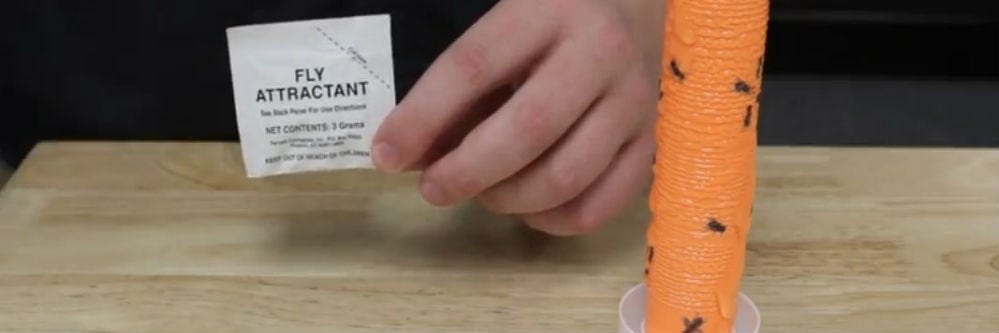
Attractants play a huge role in preventing the establishment and invasion of various problematic pests. Pests such as flies, cockroaches, ants, and even wild animals are usually lured by special attractants because of their need for mating and reproduction. If there are pheromones in the air, they are easily drawn to the source, which pest control experts use to their advantage to seize and eliminate them.
Chemical attractants produced by plants and insects have been the answer to the public's demand for more potent insect-control agents and for homeowners who want a less toxic method of addressing a pest problem.
On this page, you will learn about attractants, the pros and cons of using attractants, and how to properly apply attractant-based products around your home to treat rodents and insects. You can also shop the best products we carry in stock that contain attractants.
What are attractants?
Attractants are any chemical or substance that lures insects or other problem pests to a trap, removing them from crops, animals, stored products, or areas they infest.
While attractants can be a substance or the scent of a food source that the target animal enjoys, the most active attractants are sex attractants. Sex attractants, also called pheromones, are highly specific and, therefore, excellent tools for detecting and estimating insect infestations. These and other natural attractants and repellents are useful in several ways for controlling harmful insects.
Other attractants besides pheromones include food scents that a target pest is known to enjoy, such as peanut butter for rodents and floral or sugar-based scents for insects.
Conditions for Using Attractants
Attractants can be used in food plants, kitchens, restaurants, food processing plants, hospitals, residences, zoos, and residential areas.
Customers who prefer to use attractants often do so because it is a relatively cheap, quick, and easy method of capturing mice, rats, or other insects that have infested their homes or places of business.
It can be hard to go on the hunt and inspect for pests, so attractants often do the work for you by luring and capturing the offending pest with an attractant.
Benefits of Using Attractants
The main benefit of attractants is that they are relatively cheap and easy to use. Depending on whether the attractant is a trap or a poisonous bait, pest control products that contain an attractant can quickly address and eliminate a pest infestation.
Attractant Drawbacks
The biggest drawback to attractants is that their success is dependent on proper application by the applicator and the characteristics of the environment in which they are placed. Some products that contain food attractants must not compete with an actual food source. The product may be less effective if the treatment area is not adequately sanitized or prepared.
At times, attractants may not work because the offending pest develops a resistance to the attractant (particularly when it's a food scent).
Products solely attractants don't have killing or trapping capabilities, so they must be combined with an actual trap or insecticide, which you must buy separately.
Our Recommendations
There are attractant products that are combined with insecticides or traps, and there are products we have that are only an attractant that should be used in tandem with a trap or insecticide. Here are what our experts have compiled to be the best products that utilize attractants.
Musca-Stik - are insecticide-free, odor-free, indoor/outdoor sticky fly traps that attract flies two ways - Musca-Glo™ orange colored paper attracts flies visually. In contrast, the powerful fly sex pheromone, Muscalure, doubles the attraction power.
Pro-Pest Pantry Moth & Beetle Traps—are pre-baited with pheromones to attract a wide range of pantry pests that commonly infest households. The pheromones in Pro-Pest Pantry Traps will attract Indian Meal Moths, Almonds, Raisins, Tobacco, and Mediterranean Flour Moths. Our traps also include a pheromone to attract Cigar Beetles, which are common pests.
Tools Needed
Depending on the product you are using (whether it is a combination attractant and trap/insecticide or a stand-alone attractant), you will need the help of a trap or insecticide if you are simply using an attractant. No matter what you use, it's important to wear the proper PPE before handling attractants and pesticides.
User Guide
Products containing attractants vary and are not all universally applied the same way. Applying a product containing attractants can be as simple as opening the product up and placing it in areas where you wish to target an infestation. Look at the product label directions and instructions for proper application instructions.
Step 1: Use The Proper PPE (Personal Protective Equipment) For Your Application
We recommend using gloves, safety glasses, and a protective mask before handling attractants, traps, and pesticides.
Step 2: Set the Trap or "Kill Zone"
Place the trap down in an area where you wish to control your target pest, or if using a pesticide, apply it in an area where you will be placing an attractant to lure your target pest to the location where they will succumb to the pesticide you have used.
Step 3: Apply attractant

Place the attractant either on top of a trap (snap trap or glue trap) or in an area where you have placed rodent poison or insecticides. After this, it will only be a matter of time before the target pest is captured or killed after the attractant lures it.
Key Takeaways
- Attractants are helpful tools for capturing problem pests by luring them with sex pheromones, special scents, or food attractants that the target pest enjoys.
- Attractants can be stand-alone or combined with a trap or pesticide.
- The effectiveness of an attractant depends upon the pest type and the conditions of the area (e.g., your home, etc.).






